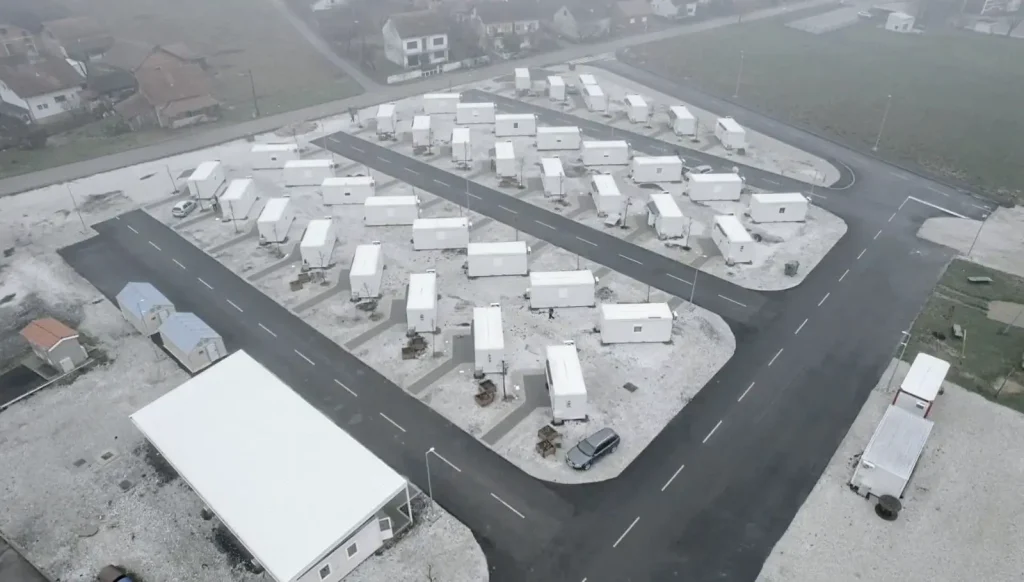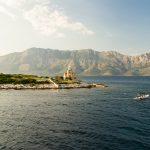After last year’s devastating earthquakes in and around Petrinja late last December, I decided to visit the worst-affected areas to put together a TCN report in English, which would hopefully show a wider audience the realities on the ground. It was a harrowing day. You can read last year’s Majske Poljane, Glina, Petrinja: A Foreigner View of Croatia’s Emergency Response.
A year later, I had been planning to support Osijek at HeadOnEast 2021, but the earthquake anniversary had me heading to Petrinja instead. I was not sure what I was looking for exactly, so initially, we decided to head to the places I had visited in the report last year and see what progress had (not) been made. Below an overview of yesterday with a mixture of last year’s photos and those from yesterday (the good ones thanks to Steve Tsentserensky, who came with his drone and trusty camera).
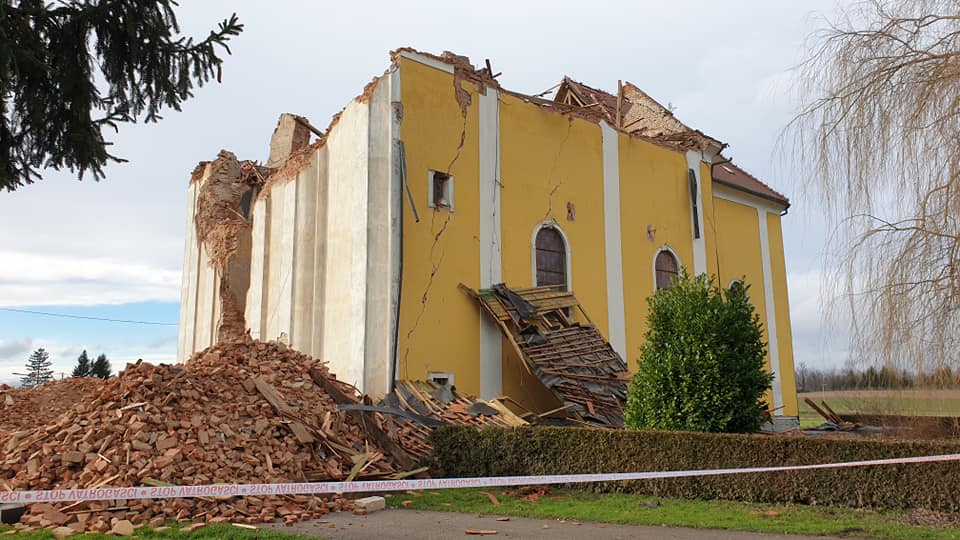
First stop, the church in the village of Zuzana, which was where one of the 7 victims of the earthquake perished. The church organist was apparently cleaning the organ when the front half of the church disappeared in seconds.
A year later, all the rubble has gone, and some wooden boards added to the roof.
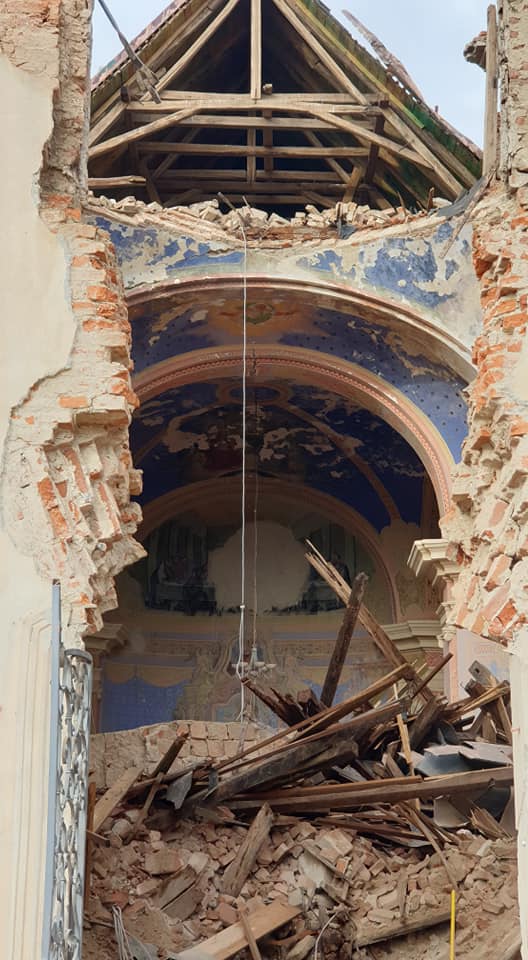
The beautiful interior cum exterior with frescoes in 2020…
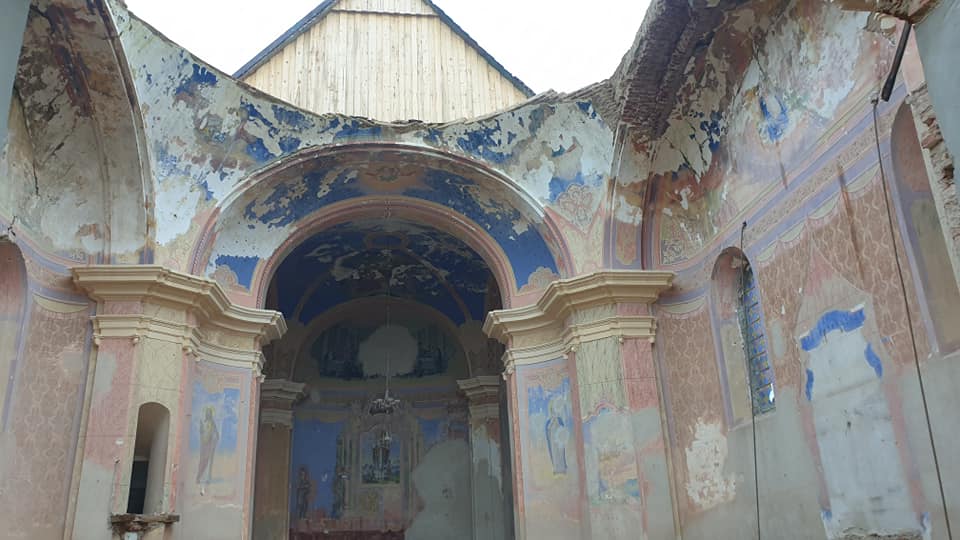
… and in 2021.
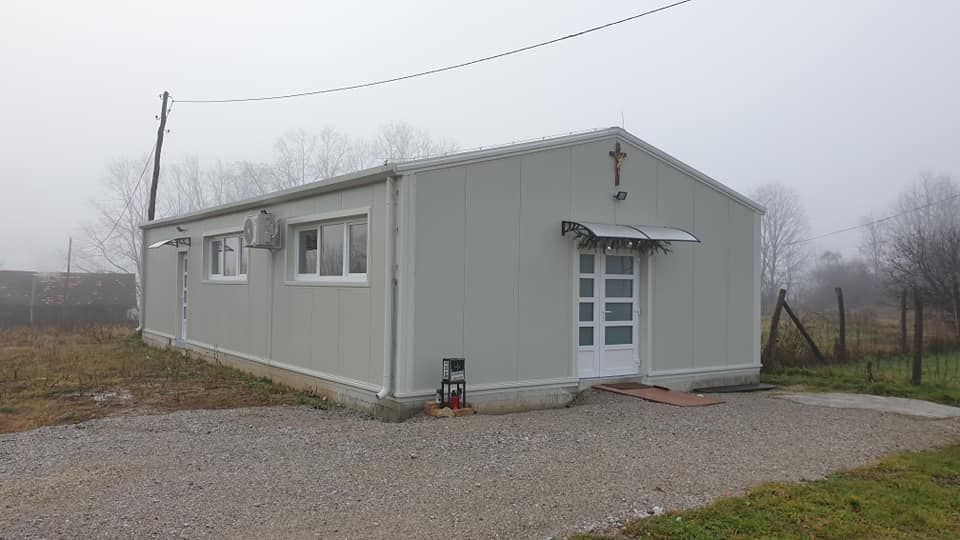
Although not much work has been done on the old church, there has been construction almost directly opposite – the new church, consisting of a few containers put together. I almost wrote ‘temporary church’ but I wonder if it will be temporary.
Those wanting to make a donation to the church restoration fund are welcome to do so.
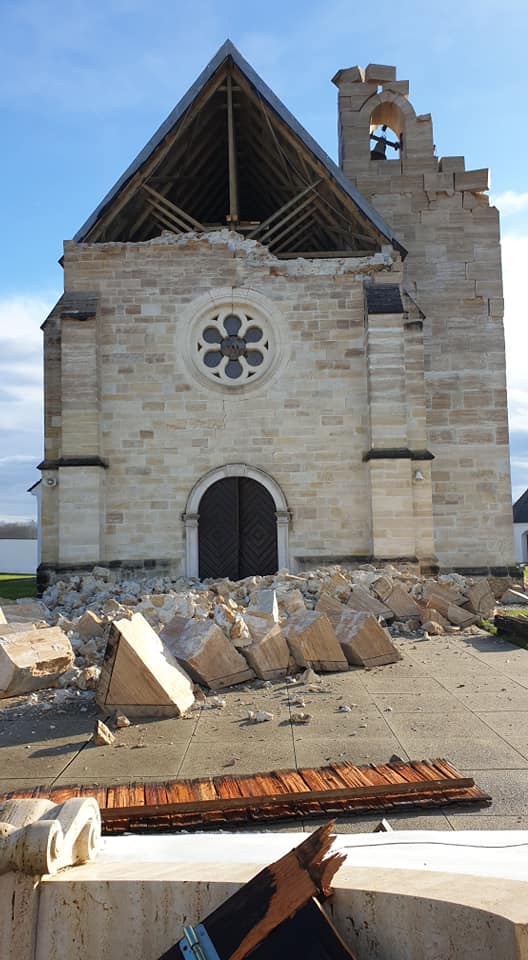
We revisited another church on the way to Majske Poljane, the epicentre of the earthquake. This beautiful stone church had been rebuilt after being destroyed during the Homeland War and had only been in function a few years. By contrast, there were wooden houses nearby which were totally unaffected by the quakes.
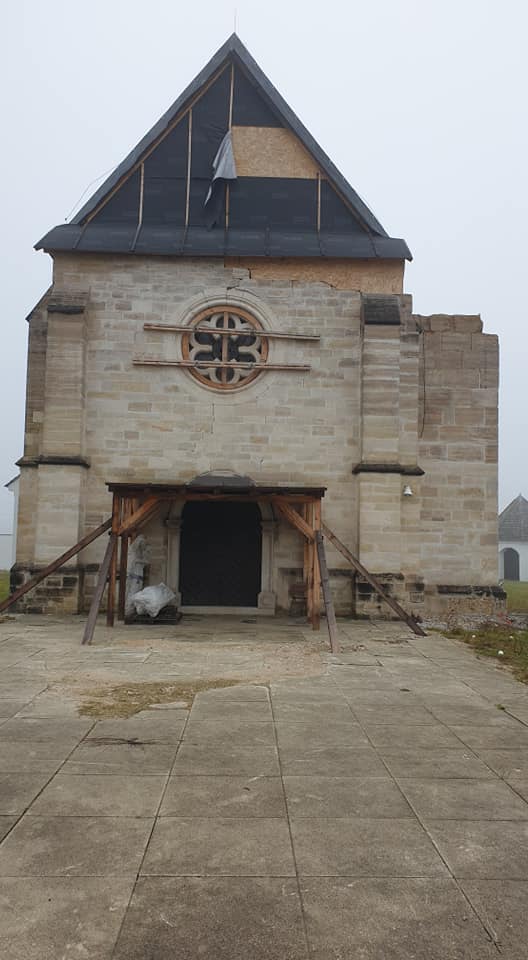
A year later.
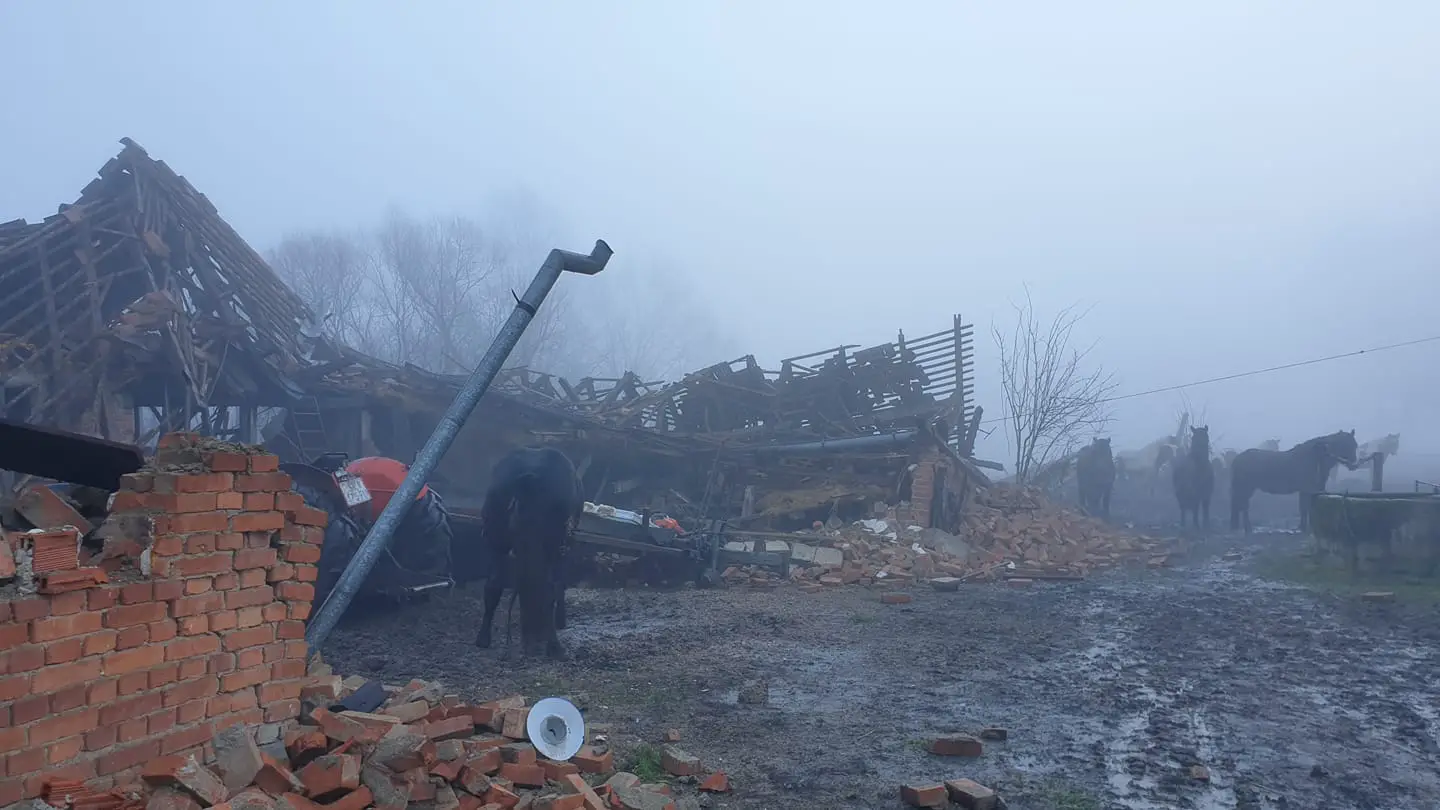
By far the most depressing place last year was the forgotten village of Majske Poljane. I found these horses looking a little bewildered at the end of the village last year. After tipping off a couple of national news crews about their whereabouts, they were television stars that night, with donations of hay and other supplies pouring in. The houses all around them had been flattened.
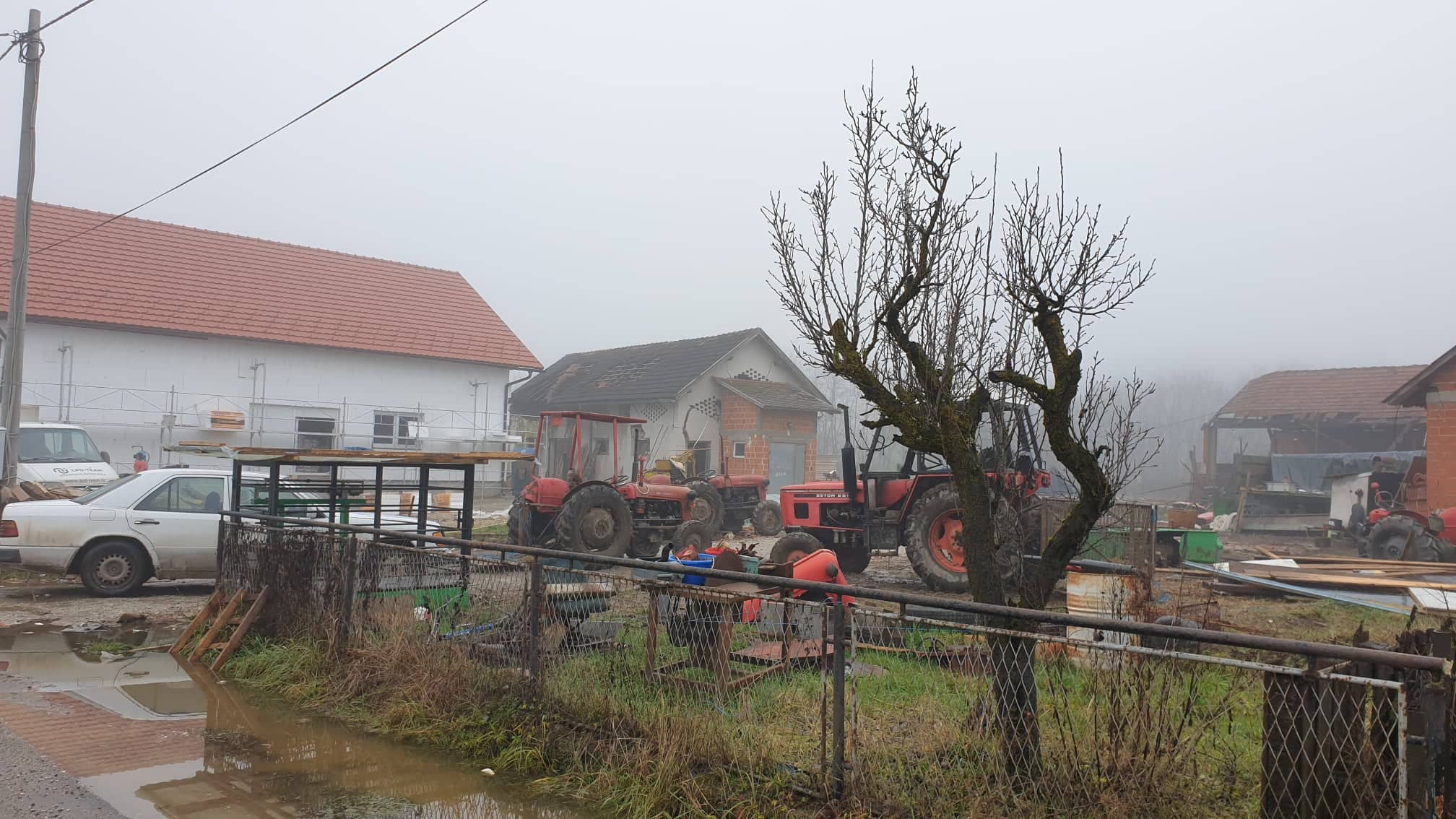
A year later, the horses have found another home, the rubble has been cleared, and a new house is being constructed.
Cows in the field behind are almost the only sign of life in the village, which has no shop, bakery, cafe or bus service. For those without a car, walking or cycling about 7km to Glina is the only option. There are very few people left in Majske Poljane.
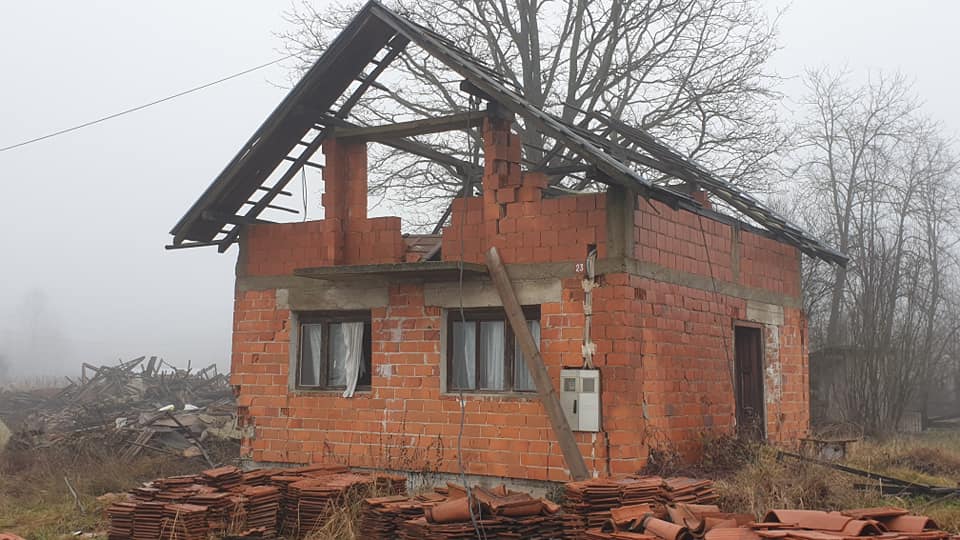
And while there were a few renovated houses, as well as a sprinkling of donated containers, mostly it looks a lot like this.
How much of the damage is due to the 2020 earthquake, and how much from the war in 1991-5? It is not always so easy to distinguish. And with many buildings abandoned 30 years ago, one wonders what the chances are for revitalising communities such as Majske Poljane this time around.
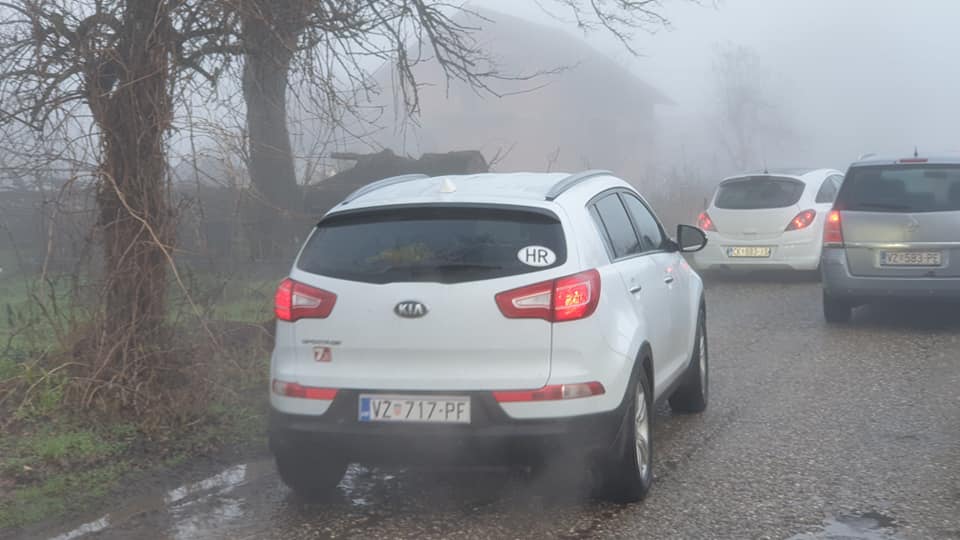
Last year, the narrow street that runs through this very long village was packed. They came from Dubrovnik, Slavonia, Istria, and Varazdin. Private citizens who filled their cars with food, blankets and medicine, and they headed to Petrinja, Sisak and surrounding villages to offer what help they could. It was a heartwarming sight and one more confirmation that Croats really are the best nation in the world in adversity.
There were hardly any cars this year, just a couple of journalists and a few policemen.
We soon found out why, as I was ordered to move my car, for the Croatian President was coming to visit the village on the anniversary. It was quite the entourage, probably more cars than the village has seen the entire month.
Being the star photographer that I am, my phone was set to video as President Milanovic went to visit a family to use as a political tool in his fight with Prime Minister Plenkovic.
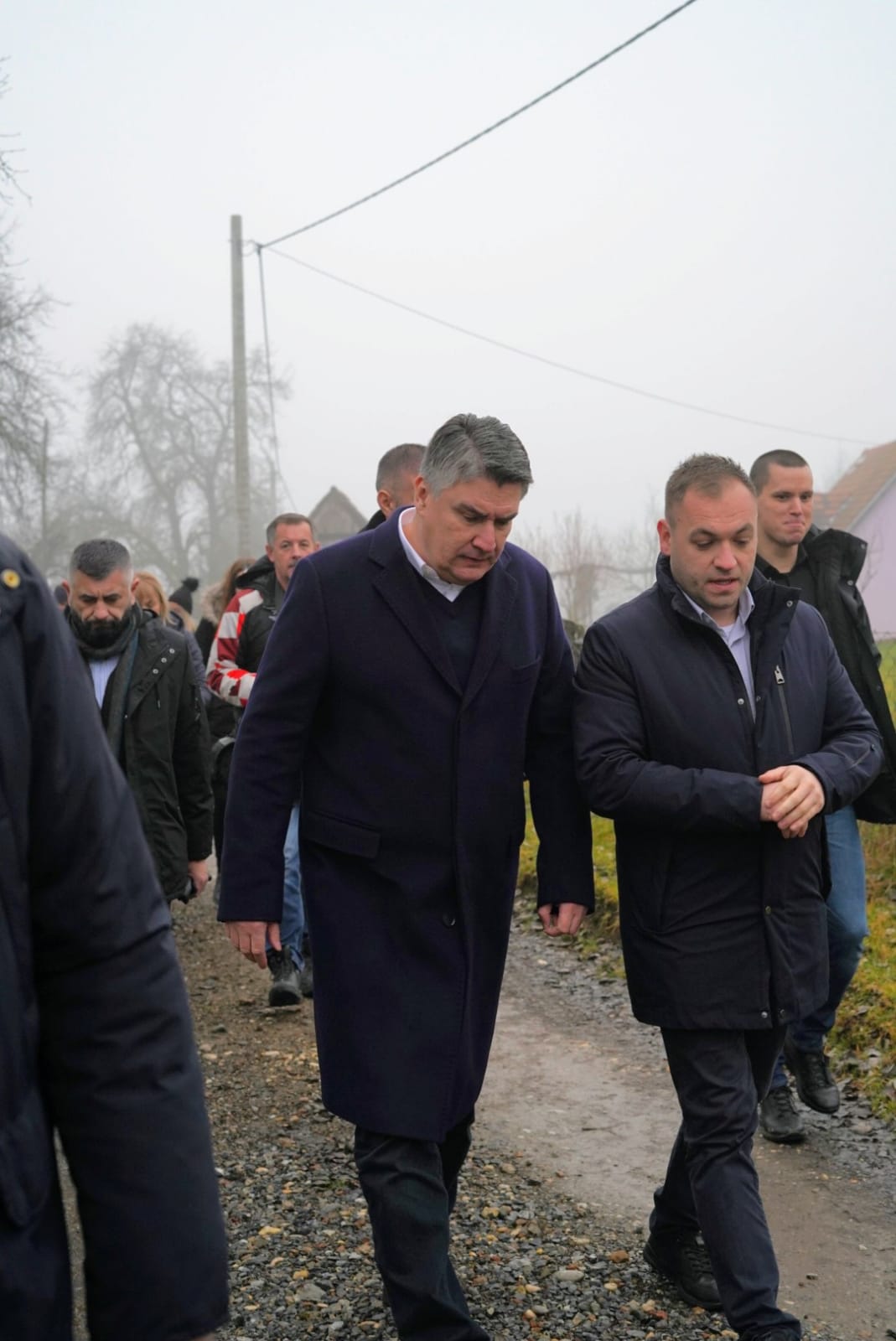
Fortunately Steve is a better photographer than me. The total visit was about 10 minutes. It felt a little like the levels of interest politicians have in Vukovar on November 18. And then forget for 364 days.
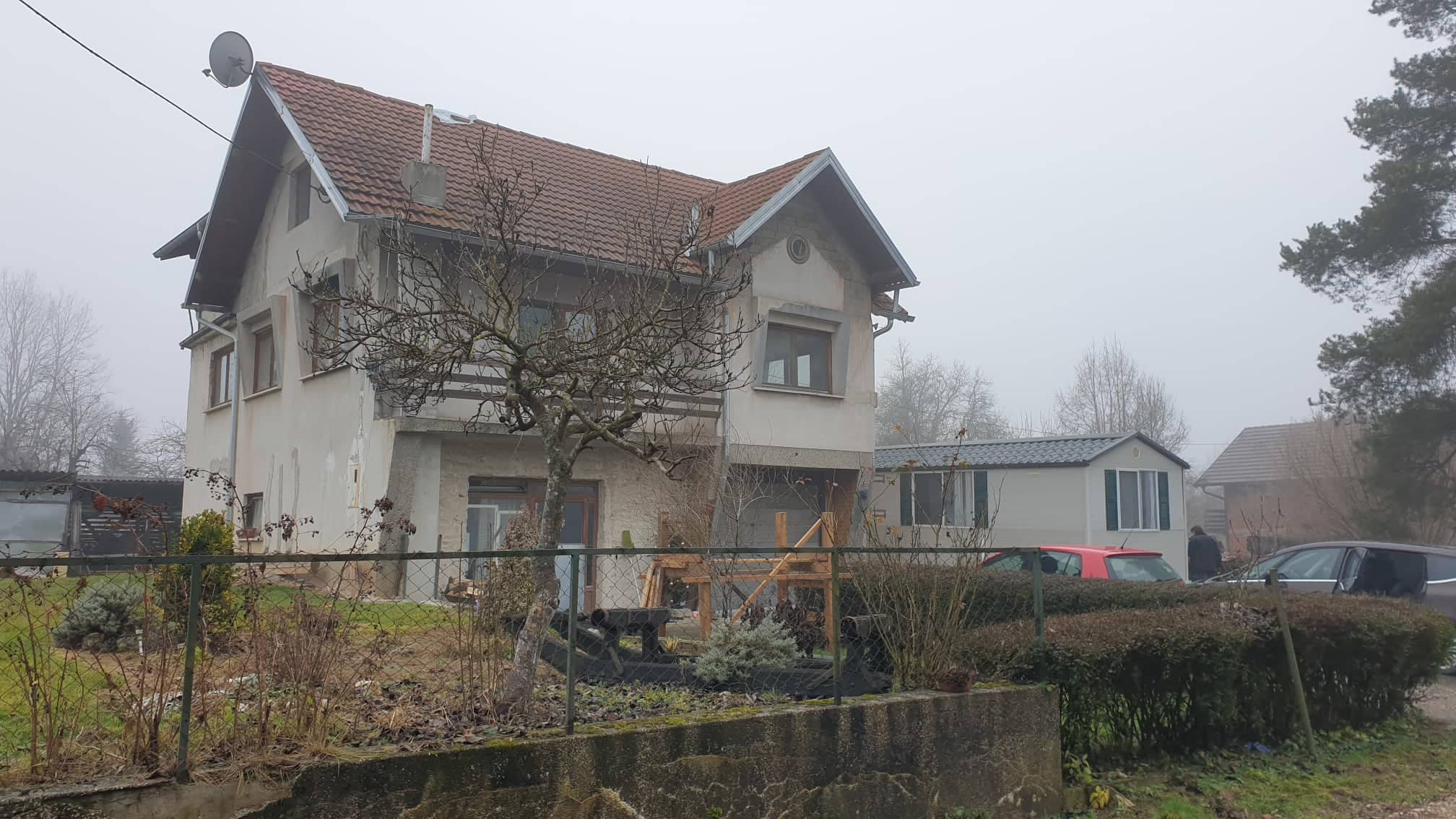
I have never been very good at being a journalist and had no idea that the President was coming, but we decided to follow. The narrow road made a mockery out of our attempts to give chase, but eventually we found the parked cars and followed another car into the parking of this house. A surprised and suspicious woman came out – having probably not seen a car pass in a week, she now had 3 parked on her drive. I asked her if it would be ok to park there for 20 minutes, and she gave her assent.
After the media circus had left, I knocked on her door to thank her and to ask her how things were in the village now. Within seconds, she was in tears, talking of the daily struggle and the abandonment (it was clear that a media appearance from the President had little to do with her life). Her only choice for supplies was the 7km bike ride. Everything that they had managed to renovate had come from their own pockets. The container in the drive was home to her invalid brother. It was a miserable existence.
I put my hand in my pocket to give her the money I had, which she accepted after a slight hesitation. She had just baked a cheese pie, and she gave me a few pieces for my journey, and we said goodbye.
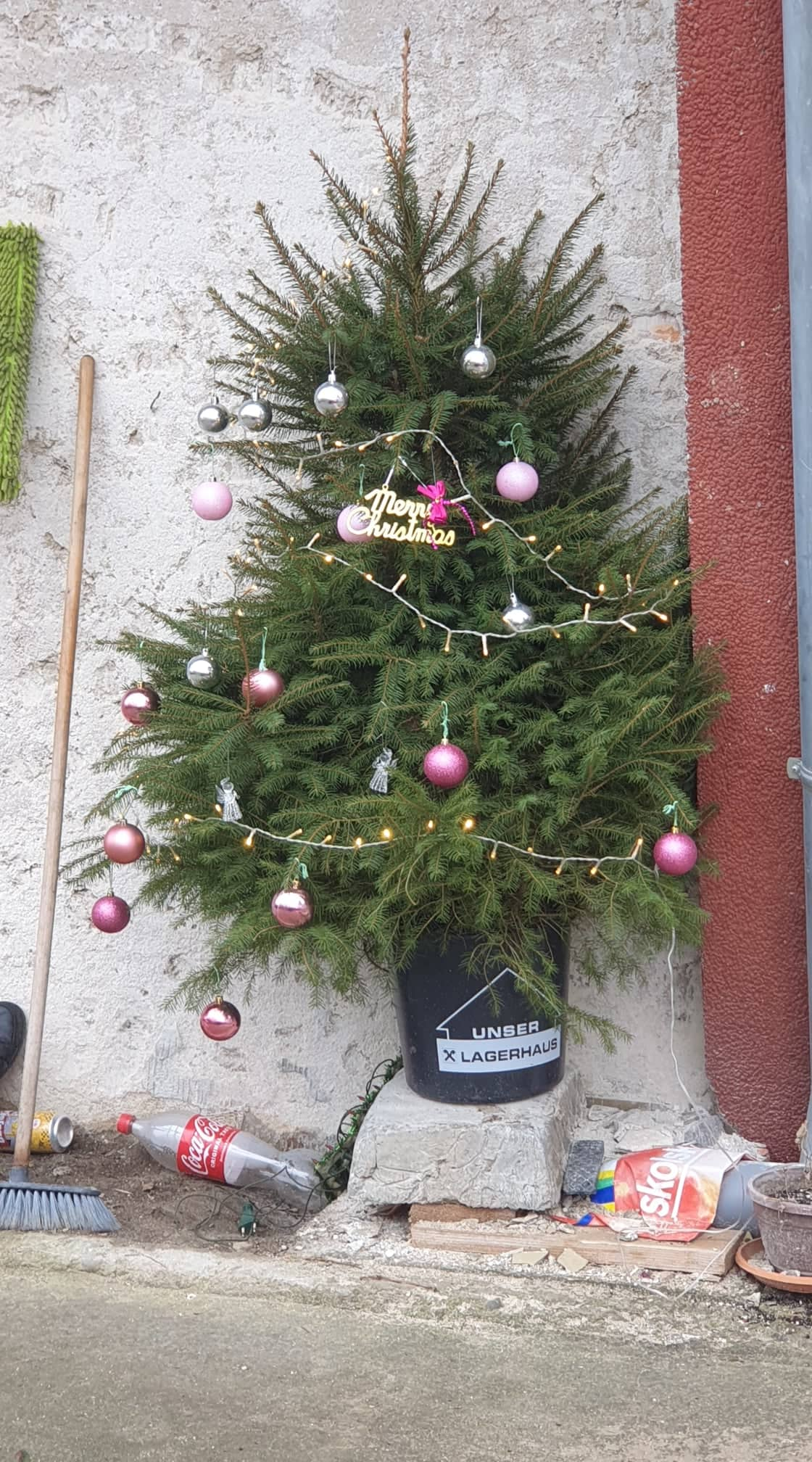
And despite the wretched conditions and surroundings, a celebration of this most festive time of year. But Santa did not come to Majske Poljane in 2021. Or at any time since 1991.
The President (who is from SDP) was not the only one playing politics yesterday. I learned later that Prime Minister Andrej Plenkovic (HDZ) was in Petrinja where he was booed and had a snowball thrown at him. I learned of their movements, and it provides the perfect snapshot of Croatian politics today and how they are failing the lady who made the delicious cheese pie above – and thousands like her. Apparently…
The SDP President visited Majske Poljane and Glina (SDP territory), but not Petrinja (HDZ territory) and denounced the HDZ government response. The SDP Deputy Mayor of Glina criticised the reconstruction for being too slow.
Meanwhile the HDZ Prime Minister visited HDZ Petrinja, but not SDP Majske Poljane or Glina and had some choice words for the President. The HDZ Mayor of Petrinja said that the reconstruction had not started in earnest due to the global financial crisis and problems pre-dating the earthquake.
Same earthquakes.
Same national tragedy.
Same natural disaster which evoked such a united response from the people of Croatia.
As for the politicians…
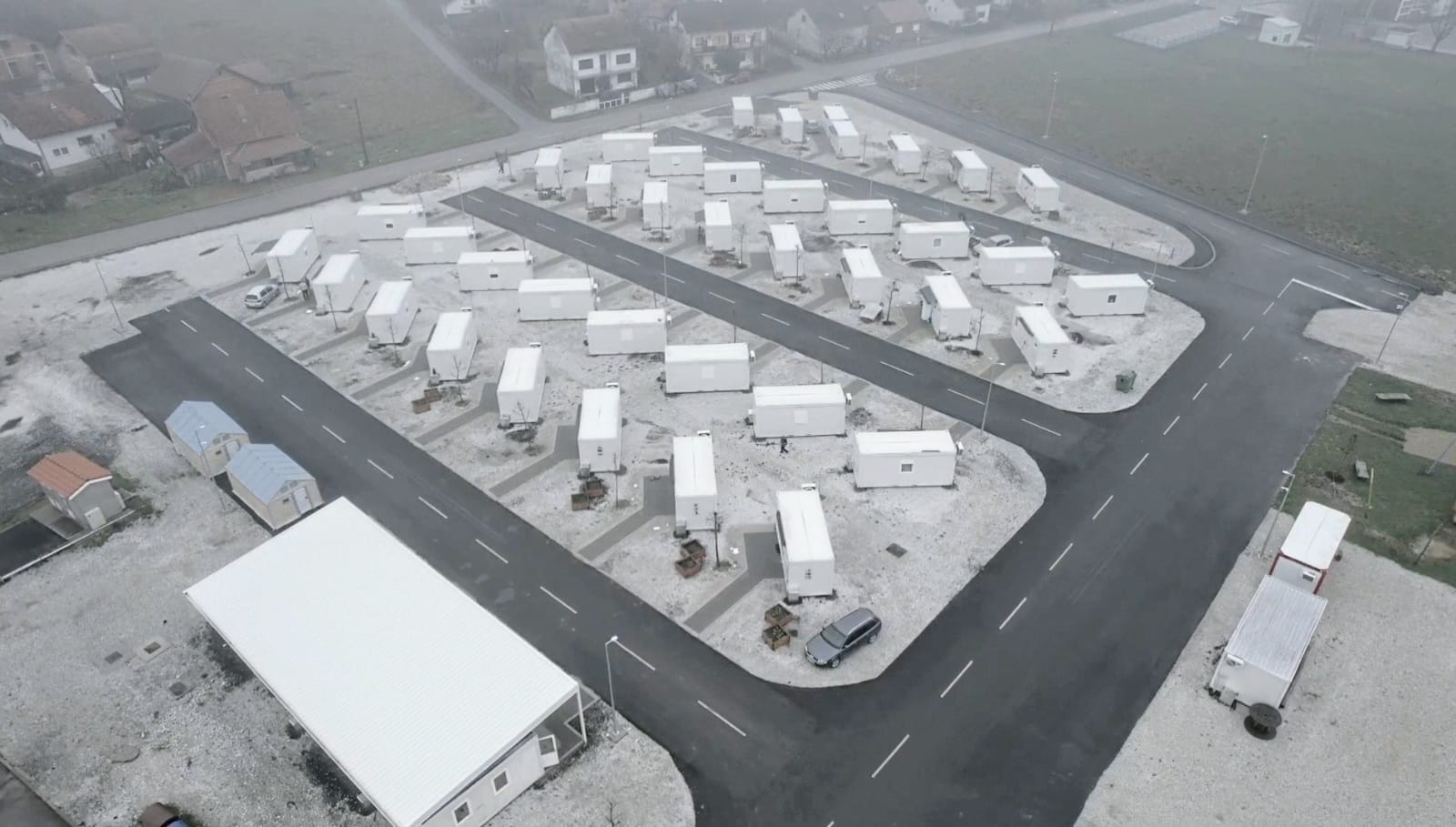
And then the most curious thing. Not far from Majske Poljane, and surrounded by decay and destruction, something akin to a model container village, complete with its own roads and communal facilities such as laundrette.
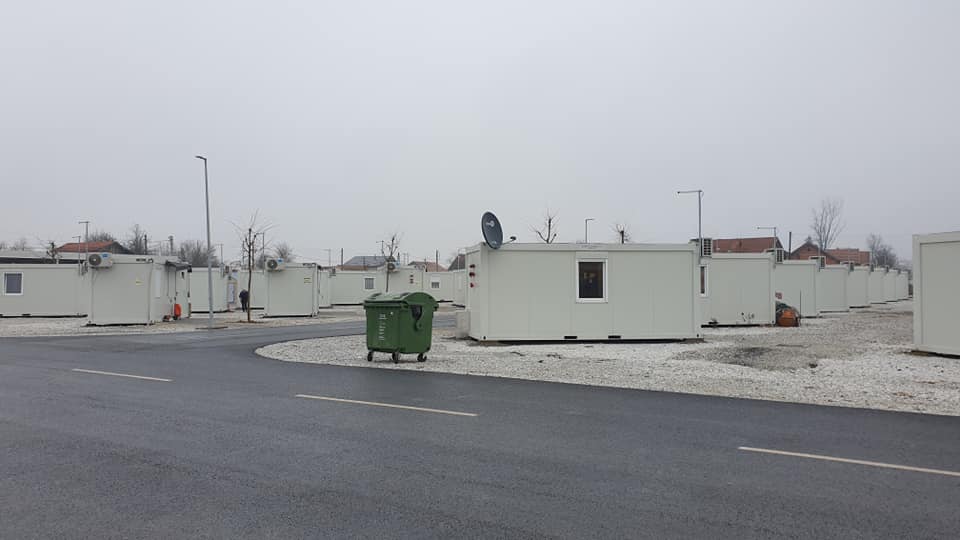
There were about 40 in all, a stark contrast to the decay all around.
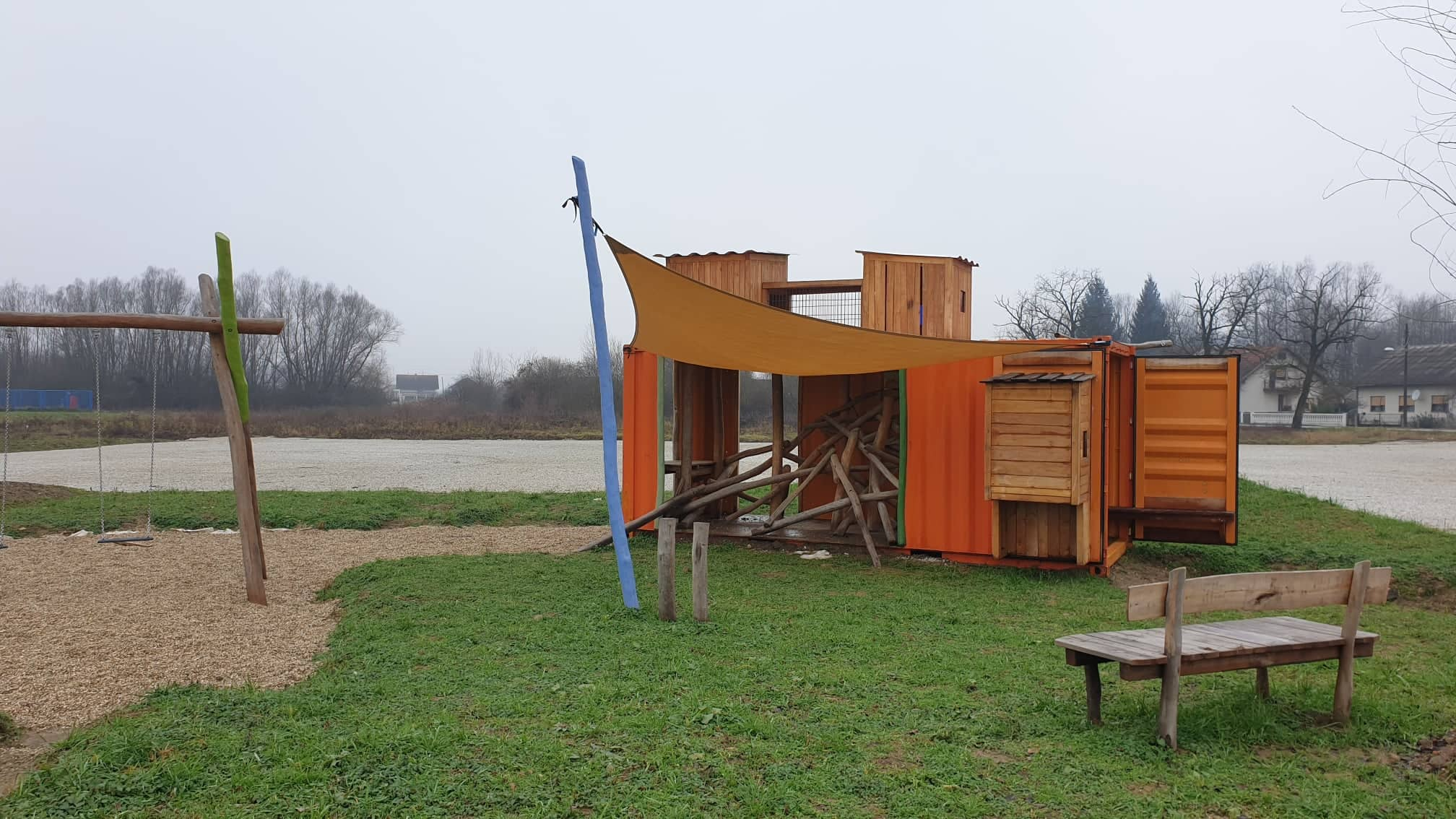
Even a small children’s playground.
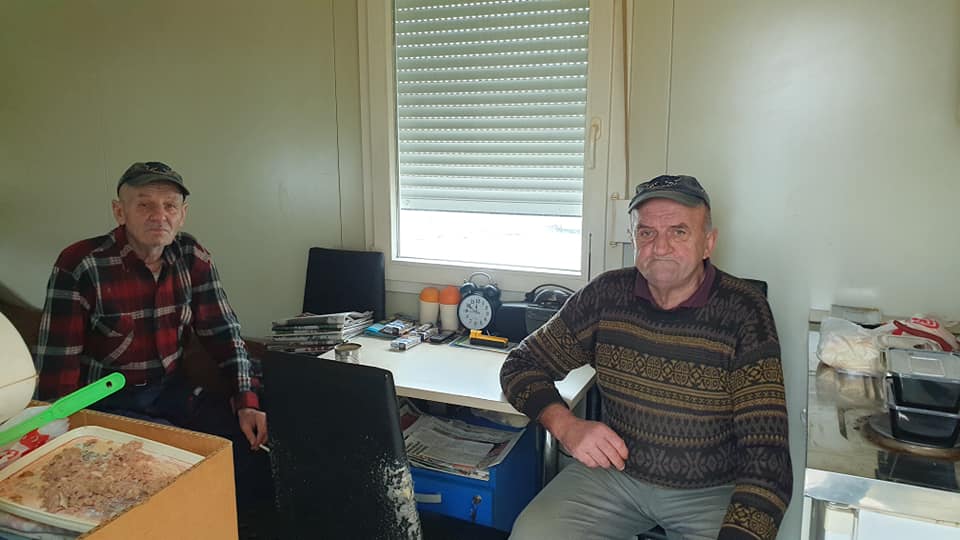
I approached a man smoking outside one of the containers, introduced myself and asked if he wanted to talk. He did.
This has been his home since April 3. He shares the 10m2 container with his brother. It is warm, they bring lunch every day, there is a television.
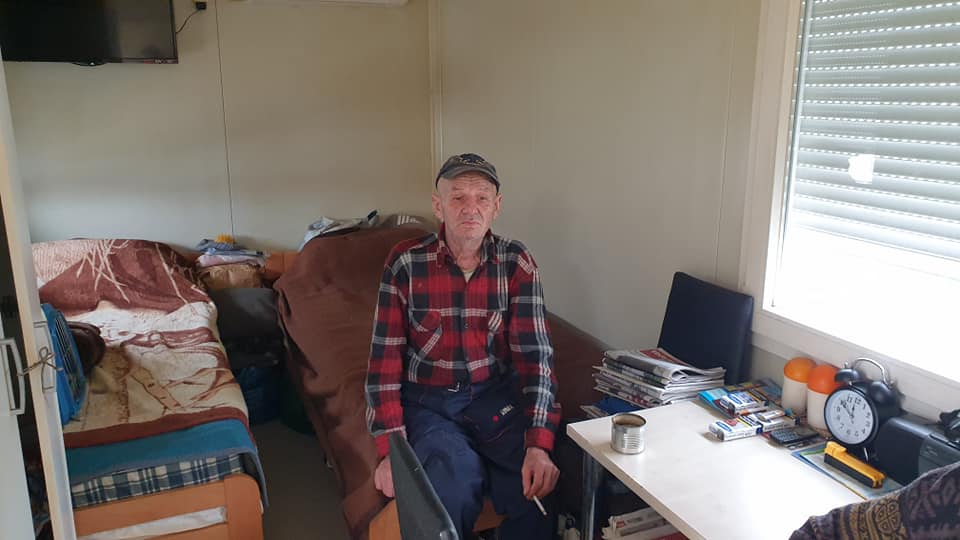
And two single beds, a table, a fridge, a kitchenette, and a bathroom.
It is an existence, and certainly warmer and more comfortable than many around. How long will they stay? He has no idea. There is nothing happening with renovating his house, and there seems to be no plan.
It is an existence.

(Gyumri, Armenia in 1988 – 4.0 International (CC BY 4.0))
My mind went back to 1993 and my days as a humanitarian aid worker in Armenia. I was visiting the internally displaced living in containers after the devastating earthquake in Spitak and Gyumri, which killed at least 25,000 people 5 years earlier.
Gorbachev had promised to rebuild everything, but he and his Soviet Union were soon confined to history, and those poor souls were still living an existence in the same containers 5 years later. I was there to do a food security survey for a new round of food distribution.
“Fuck off back to where you came from. We are sick of your surveys. Sick of just existing. Do something so we can move out of this shit.”
I felt their pain then, and I felt it yesterday and sincerely wish the same thing does not happen in Croatia.
But I am sadly not hopeful.
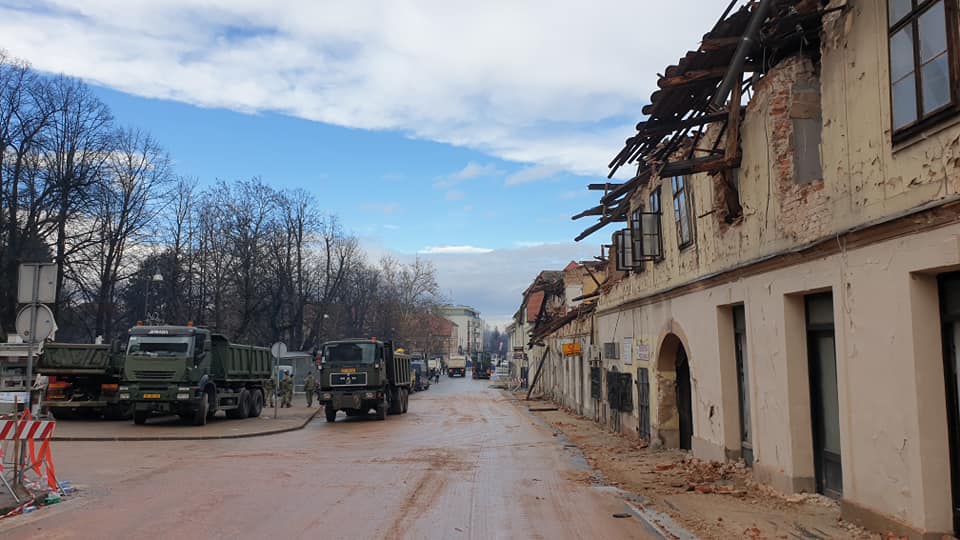
It was a solemn drive to Petrinja, which was VERY busy and lots of police. We found out later that the Prime Minister was there, attending a memorial mass.
This is how the main square looked a year ago.
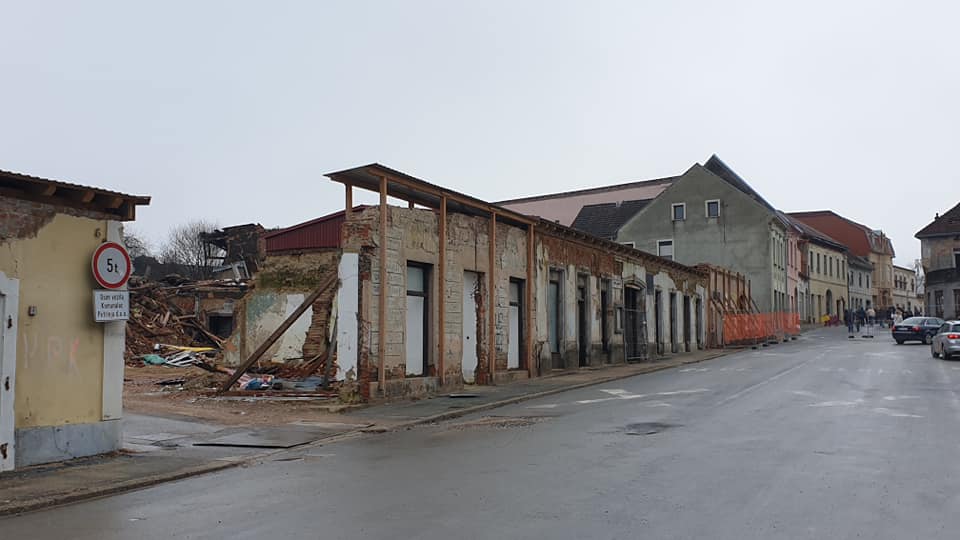
And yesterday. Everything has been stripped back, as though a proper and thorough renovation and restoration process is about to take place. I sincerely hope so, although it felt somewhat ironic seeing so many facades standing alone with no building behind them anymore. As if that might be the fate of the town. But let’s hope.
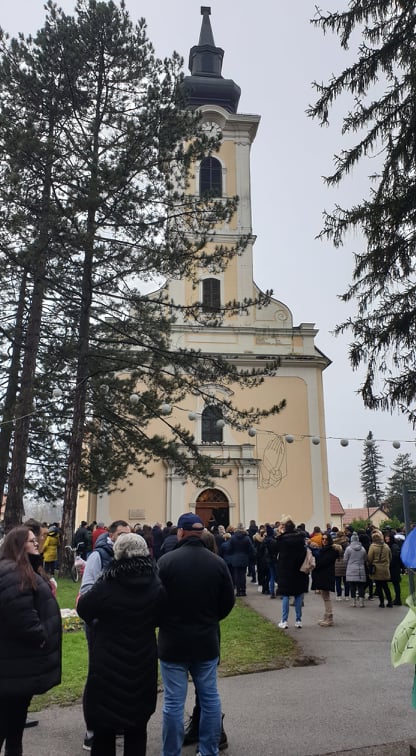
A good attendance at the Mass.
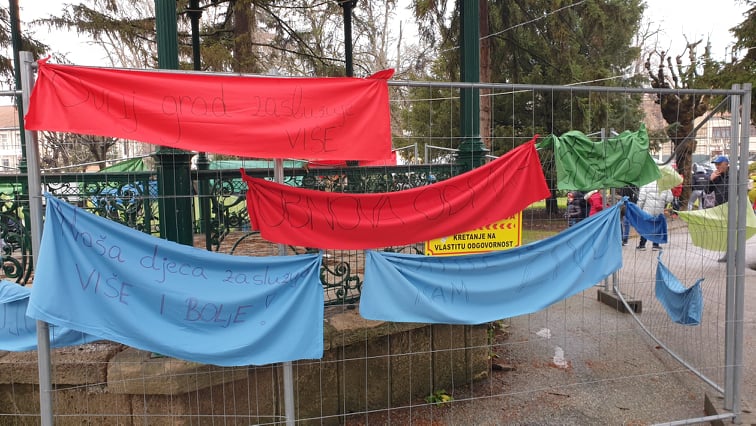
It was only when I got closer that I wondered how many were attending the Mass, and how many protesting against the Prime Minister. The messages were fairly direct:
This town deserves better
Our children deserve more and better.
Reconstruction immediately.
The people of Petrinja certainly got their message across. Whether or not it will lead to affirmative action remains to be seen.
With the benefit of Steve’s drone, there was one additional stop this year, to the small village of Mecencani, about 20km south-east of Petrinja. It has become the sinkhole capital of Croatia, with more than 100 holes suddenly appearing in the ground after the earthquake.
A distressing day, and one which was perhaps summed up by this image as we exited Majske Poljane. A lone man, mixing concrete, working alone to do the step-by-step reconstruction of (presumably) his home.
TCN will return in a year to see what progress has been made.

